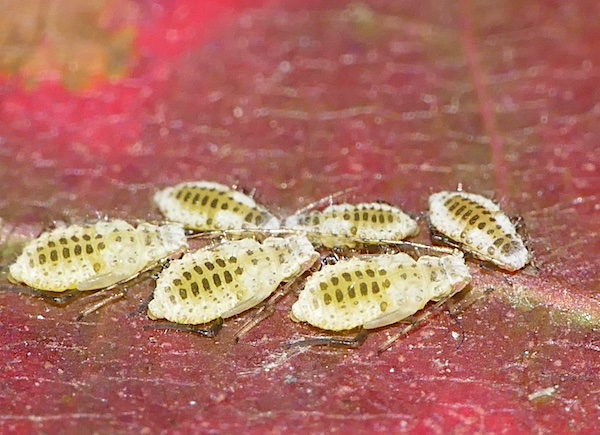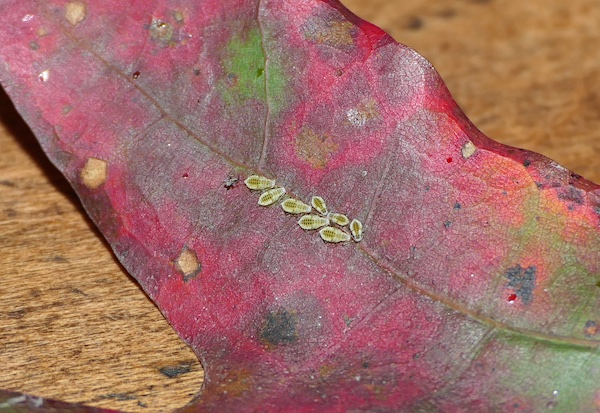Top Photo: Myzocallis aphids on scarlet oak leaf.
There are more than 1300 species of aphid in North America. It seems like every plant species or variety has its own specialized aphid, sucking the juices from the plant and often causing serious damage in the process. Other times the damage is minimal and the plant is relatively unharmed. Such is the case with the aphids shown here (Myzocallis).
I found and photographed several small groups of this Myzocallis aphid on a scarlet oak tree at the entrance to Earth Moves in Catch the Wind. But they didn’t overwhelm the oak. There seemed to be half to a dozen on the leaves that had the tiny, approximately 2mm long insects (most species of aphid are very small, the largest being about 6mm — whopping big for an aphid!).

Aphids make a living sucking the sap from whatever plant they happen to be on. Some species have one or two plants which they prefer. Some are generalists. The Myzocallis aphids seem to prefer oaks.

All of the ones seen here are wingless females. During summer they produce live young. In the fall they produce eggs. These aphids will, if they haven’t already, lay eggs in crevices and cracks in the bark of the tree’s twigs and branches, overwintering there. Some aphids lay eggs on the leaves of the tree and overwinter in the leaf litter beneath the tree as the leaves fall to the ground at the end of the season. Whatever the species, most overwinter as eggs.

The eggs will hatch the next spring as winged females which reproduce asexually giving birth to live wingless females which persist through the summer until the next fall when the process starts all over again.
The next time you’re out in Catch the Wind give a look at the oaks (if they still have leaves on them — or look on the ground if they don’t). You may see a handful of aphids huddled together on one of the leaves.

Most people have a strong dislike for aphids, especially gardeners. Birds, like ruby-crowned kinglets and Carolina chickadees, eat them. In fact, they depend on them and other small insects and their eggs for survival, particularly in winter when food becomes scarce. An aphid egg makes for a nutritious little bite. That’s worth remembering.


Ranger Greg